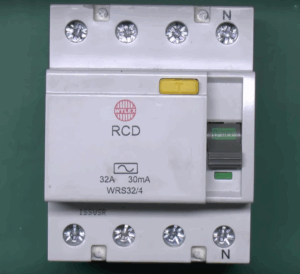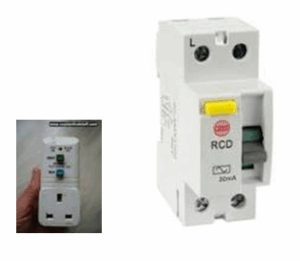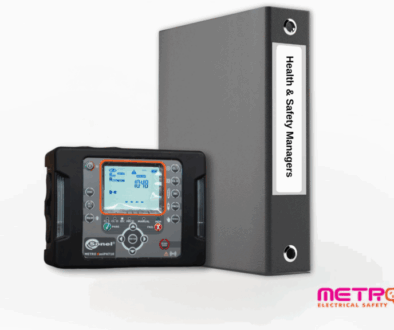What Is a Residual Current Device?

Introduction
A residual-current device (RCD) or residual-current circuit breaker (RCCB) is a device that quickly breaks an electrical circuit to prevent grave harm from an ongoing electric shock.
An RCD is designed to automatically and quickly disconnect a circuit as soon as it detects that the electric current is not balanced between the supply and return conductors of a circuit.
This is designed to prevent injury although this may still happen sometimes. For instance, a man falls after receiving an electric shock. Another instance is if the person touches both conductors at the same time.
These electrical wiring devices are designed to quickly and automatically disconnect a circuit when it detects that the electric current is not balanced between the supply and return conductors of a circuit. Any difference between the currents in these conductors indicates leakage current, which presents a shock hazard.
Current of around 30 mA (0.030 amperes) through the human body is potentially sufficient to cause cardiac arrest or serious harm if it persists for more than a small fraction of a second. RCDs are designed to disconnect the conducting wires (“trip”) quickly enough to prevent serious injury.
RCDs are testable and resettable devices. A test button safely creates a small leakage condition, and a reset button reconnects the conductors after a fault condition has been cleared.
Some RCDs disconnect both the energized and return conductors upon a fault (double pole), while a single pole RCD only disconnects the energized conductor. If the fault has left the return wire “floating” or not at its expected ground potential for any reason, then a single-pole RCD will leave this conductor still connected to the circuit when it detects the fault.
This is a device for human safety rather than solely protecting computer equipment and its function is to minimize the possibly of injury through electric shock. An RCD works by detecting if electricity is “leaking” from a circuit and if so it breaks the circuit.
Most RDCs are combined with a circuit breaker and so will protect equipment in the case of an overload.
How to Test the RCD
Typically, RCDs can be tested by pressing a testing button with should cause the device to operate as if a dangerous leakage had occurred. If the device operates properly, it can be used in a live environment and will perform its function. RCDs should be checked on a regular basis to make sure that they are still functioning properly.
SafeWorkNSW Code of Practice
There are government regulations that cover the use of RCDs. You need to familiarize yourself with your local government’s policy.
SafeWork NSW has prepared a code of practice that includes the use of RCDs. The managing electrical risks at the workplace code of practice provides more information about electrical work and risk controls.
According to their report:
The risk of electric shock often results from people making contact with unprotected energized parts of electrical equipment and earth. Contact with energized parts may occur by touching:
- bare conductors
- internal parts of electrical equipment
- external parts of electrical equipment that have become energised because of an internal fault
- metallic or other conductive equipment that has inadvertently become live.
 Contact with earth occurs through normal body contact with the ground or earthed metal parts.
Contact with earth occurs through normal body contact with the ground or earthed metal parts.
Serious injuries and fatalities may be prevented by the use of properly installed and maintained RCDs, commonly referred to as ‘safety switches’. An RCD is an electrical safety device designed to immediately switch off the supply of electricity when electricity ‘leaking’ to earth is detected at harmful levels. RCDs offer high levels of personal protection from electric shock.
RCDs work by continuously comparing the current flow in both the active (supply) and neutral (return) conductors of an electrical circuit. If the current flow becomes sufficiently unbalanced, some of the current in the active conductoris not returning through the neutral conductor and is leaking to earth. RCDs are designed to quickly disconnect theelectricity supply when they sense harmful leakage, typically 30 milliamps or less. This ensures an electrical leak isdetected and the electricity supply is disconnected before it can cause serious injury or damage.
While RCDs significantly reduce the risk of electric shock they do not provide protection in all circumstances.
For example, an RCD will not trigger off electricity supply if a person contacts both active and neutral conductorswhile handling faulty plugs or electrical equipment and electricity flows through the person’s body, unless there is also a current flow to earth.
Conclusion
Using an RCD will help prevent electric shock that’s why it’s vital to your personnel’s safety. Choosing the right RCD for your business is important that’s why you need to check the right places online. Search for Residual Current Devices here and find the perfect RCD for your needs.



